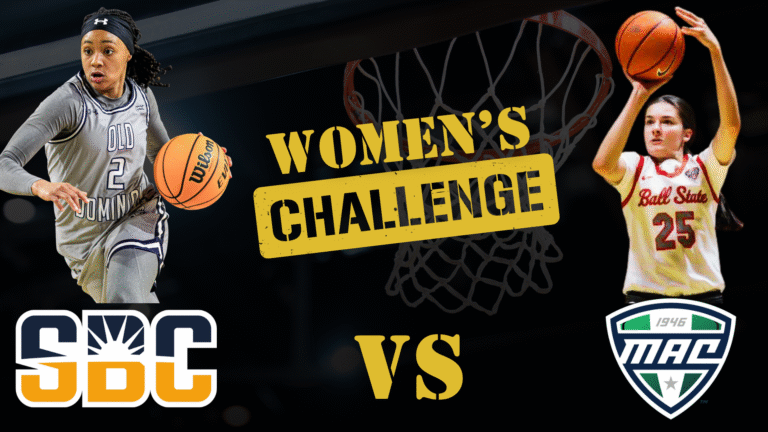
The Sun Belt Conference was founded on Aug. 4, 1976, primarily as a basketball league. Like many other conferences, the Old Dominion Monarchs and other teams in the Sun Belt East Division have experienced numerous membership changes over the years. It later added football to its list of sponsored sports. This article highlights each school’s best and worst seasons at the Division I level, whether those seasons occurred as Sun Belt members or in other conferences.
Editor’s Note: The NCAA began sponsoring women’s basketball prior to the 1981–82 season, so for the purposes of this article, all seasons before that will be considered non-NCAA.
Appalachian State
Appalachian State went 24–4 in the 1987–88 season, capturing its second straight Southern Conference regular-season and tournament titles. However, the league did not receive an automatic NCAA Tournament bid until 1989, which left the Mountaineers out of the field. Appalachian State won 14 of its first 16 games. The team earned a bye into the conference tournament semifinals and defeated Marshall in the title game for the second straight year. The program would go on to make its NCAA Tournament debut two seasons later.
In their final season as an independent, Appalachian State’s women’s team finished 2–26 before joining the Southern Conference. The Mountaineers opened the 1985–86 season with 14 straight losses. Only one game, a road match against Wake Forest on Jan. 19, was decided by fewer than 10 points. They earned back-to-back wins over future Sun Belt rivals Marshall and James Madison. However, they closed the season on a 12-game losing streak. Four of those losses came by single digits.
Coastal Carolina
Coastal Carolina recently completed its second season with a winning percentage above .700. The season concluded with a first-round loss to Campbell in the Women’s National Invitation Tournament (WNIT). The Chanticleers’ best season came five years earlier. They entered the Sun Belt Conference tournament with a 25-4 record. They earned a bye to the semifinals by finishing in the top two of the conference standings. Scheduled to face No. 6 seed South Alabama, they never got the chance. The NCAA canceled the 2020 postseason in the three days between the quarterfinals and semifinals due to the COVID-19 pandemic.
Ladies and Gentlemen!! The 2019-20 Sun Belt Player of the Year is your very own DJ Williams!! Led the Chants with 19.4 points per game, including a 51 point performance followed by just the third triple-double in school history!!#ChantsUp #SunBeltWBB #RiseAbove pic.twitter.com/1Lkav2luyu
— Coastal Women’s Basketball (@CoastalWBB) March 9, 2020
Coastal Carolina transitioned from the NAIA to NCAA Division I prior to the 1986–87 season. The program faced a difficult start. In their first Division I game, the program opened with a 101-34 loss to Wake Forest. The Chanticleers finished the season 0-24. Only three games were decided by fewer than 10 points. The program did not record its first victory over a Division I opponent until Jan. 7, 1988, when it defeated UNC Asheville.
Georgia Southern
Georgia Southern became an independent program in the 1981–82 season. This marked a high point for Eagles basketball. The team opened the season by winning its first four games and eight of the first 10. The stretch included neutral-site wins over Wake Forest and Duke. As an independent, the Eagles were not selected for the inaugural NCAA women’s tournament. However, they earned a berth in the final AIAW tournament by defeating Delta State in the Region III final. They fell to Rutgers in the round of 16.
The move to the Sun Belt Conference extended Georgia Southern’s streak of losing seasons, reaching seven by the start of the 2017–18 season. In the first 11 games of that campaign, the team’s only victory over a Division I opponent came in a two-point win against South Carolina State of the MEAC. Georgia Southern did not secure another Division I win until a home game against UT Arlington on Jan. 27, ending a 15-game drought. The Eagles did not post another winning season until 2021–22.
Georgia State
In the final season before the NCAA began sponsoring women’s basketball, Georgia State finished 28-5. It was the only time in program history the Panthers won more than 80 percent of their games. Georgia State’s best NCAA-era season came in 1999–2000 and 2000–01, with identical 24-7 records. The 2000–01 campaign gets the edge. The 2000–01 campaign stands out. The Panthers capped the season by winning the Trans America Athletic Conference (TAAC) tournament. In their first NCAA Tournament appearance, they earned a No. 14 seed in the East Region. They lost to No. 3 seed Louisiana Tech, 84–48. This marked the first of three consecutive NCAA appearances.
In the final season of the New South Women’s Athletic Conference before its transition to the TAAC, the Panthers dropped 12 of their first 13 games and finished 7-21. It took nearly two months for Georgia State to earn its first win over a Division I opponent, defeating Florida A&M and Stetson in back-to-back conference matchups. Although the Panthers did not qualify for postseason play, they placed fifth in the Northern Lights Invitational held in Anchorage, Alaska, in February.
James Madison
While James Madison reached the Sweet 16 four times between 1985 and 1991, the 2014–15 season stands as the program’s most successful in terms of overall winning percentage. The Dukes opened the season with an overtime win over then-No. 23 UCLA. They added victories over Pittsburgh and Houston to enter conference play with a 9–2 record. James Madison later avenged its only conference loss by defeating Hofstra to win the Colonial Athletic Association (CAA) tournament. As a No. 12 seed in the Greensboro Regional, the Dukes fell to No. 5 seed Ohio State, 80–70, and finished the season at 29-4.
Brown played for the Dukes from 2005-08 helping lead James Madison to a 75-23 (.761) record. During Brown’s junior season, JMU compiled a 27-6 record, was runner-up in the CAA Tournament, and earned an at-large bid to the NCAA Tournament.#GoDukes pic.twitter.com/zFh8a0TARD
— JMU Women's Basketball (@JMUWBasketball) November 16, 2022
In their first season at the NCAA Division I level in 1982–83, the Dukes matched their 6-18 record from each of the previous two years. After starting the season 4-4, they endured an eight-game losing streak before snapping it with a 66–38 win over VCU on Feb. 1. Those three consecutive seasons remain the only time in program history that James Madison posted a winning percentage below .300. The Dukes did not reach the NCAA Tournament until three seasons later.
Marshall
Marshall has recorded only three seasons with fewer than 10 losses, with the 1986–87 campaign standing as the best in program history. The Thundering Herd finished 24–5 and earned a share of the regular-season conference title for the third straight year — this time with Appalachian State. Unlike the previous two seasons, however, Marshall fell to the Mountaineers in the conference tournament final. Outside of two losses to Appalachian State, the Herd’s only defeats came against programs that are now members of power conferences.
Marshall’s move to the Mid-American Conference (MAC) in 1997, prompted by its football program’s transition to Division I-A, had a notable impact on the women’s basketball team. The program’s three worst seasons occurred between 1997 and 2000. During the 1998–99 season, the Herd opened with a 3-7 record and went 1-15 in MAC play, missing out on what would have been their first appearance in the MAC tournament.
Old Dominion
Old Dominion was among the top programs in the early years of NCAA-sponsored women’s basketball, with 11 of the program’s 13 best seasons occurring before the 2002–03 campaign. While the Monarchs boast 12 Sweet 16 appearances and one national championship, their most successful season came in 1996–97. Old Dominion lost to then-No. 16 NC State in the Preseason WNIT final, then went on a 24-game winning streak. The Monarchs finished 34–2 and captured the Colonial Athletic Association Tournament title. That streak included four wins over ranked opponents. One of those teams, Tennessee, later defeated the Monarchs in the national championship game.
The program’s final season in the Sun Belt Conference, before rejoining the CAA, marked a low point. The Monarchs finished 5–21 and missed just their second NCAA Tournament appearance. In 1990–91, Old Dominion lost eight of its first 10 games. The team then opened the 1991 calendar year with nine straight losses before beating South Florida 73–66 on Feb. 15. The Monarchs beat South Alabama in their opening game of the Sun Belt Tournament but lost to top-seeded UAB in the next round.



